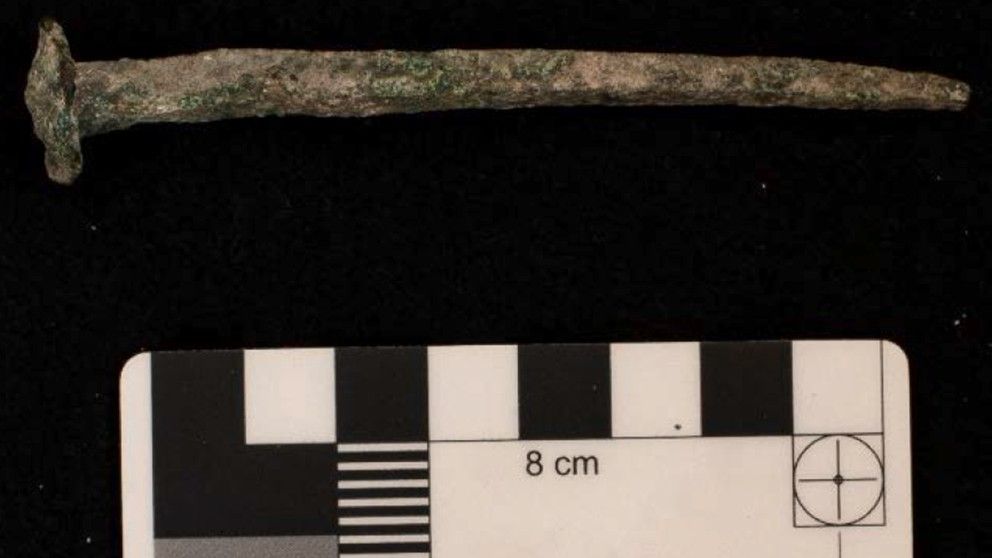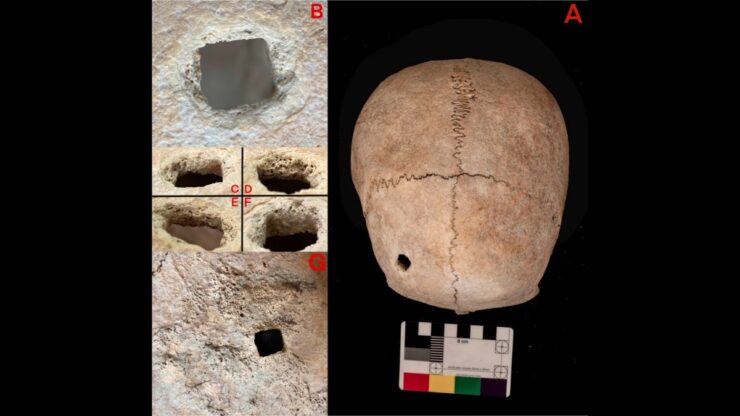An investigation of a woman buried face down with a nail hole in her skull in ancient Sardinia has uncovered signs that she may have died during an epileptic seizure.
An event that took place more than 2,000 years ago in Sardinia, an Italian island in the Mediterranean Sea, is coming to light. According to the findings, the nail was probably driven into the woman’s skull just as she was dying. Her strange face-down burial may also have been due to ancient beliefs about disease.
While a prone burial could indicate that the individual had a disease, a medical belief at the time was that the nail-shaped hole in the woman’s skull could be the result of a drug they were trying to prevent the spread of epilepsy to others.
“Epilepsy is now known to be a brain disease that is not transmitted to other people,” said archaeologist and historian Dario D’Orlando, co-author of the study. But at the time of the woman’s death, there was the idea that the disease that killed the person in the tomb could be a problem for the whole community.” he said.
The unusual burial was found in a tomb in the Necropolis of Monte Luna, a hill about 30 kilometers north of Cagliari in southern Sardinia. The burial site was first used by the Punic people after the 6th century BC and continued to be used until the 2nd century BC. The excavation of the necropolis dates back to the 1970s.
The Punic were an ancient people with origins in the Phoenicians. They are best known for their three phases of wars with the Roman Republic between 264-146 BC to capture and hold Mediterranean maritime trade. They are the largest known wars of the period.
The pottery in the tomb shows that she was buried at a time when Sardinia, which had been a center of Punic or Phoenician culture for hundreds of years, was under Roman rule.



Analysis of the young woman’s pelvis, teeth and other bones confirmed that she was between 18 and 22 years old when she died. It also showed that she had suffered trauma to her skull shortly before her death. Archaeologists found evidence of two types of trauma: blunt force trauma, which could have occurred during an accidental fall (possibly an epileptic seizure), and puncture wounds from an ancient Roman nail. Such nails have been found at various archaeological sites in Sardinia. Secondly, the nail hole may have been added to the woman’s skull after her death to prevent transmission of her epilepsy.
According to D’Orlando, the assumption that certain diseases in the Mediterranean were caused by bad weather may have been based on Greek beliefs. He said that the practice of nailing the skull and burying the woman face down could also be explained by the introduction of new Roman ideas to Sardinia, which were heavily influenced by ancient Greek ideas.
Gaius Pliny Secundus (known as Pliny the Elder), a Roman general and natural historian in the 1st century AD, is known to have recommended the nailing of body parts after death from epileptic seizures to prevent the condition from spreading.
But archaeologist Peter van Dommelen of Brown University, who was not involved in the study, said, “The culture in Sardinia remained resolutely Punic despite Roman rule. What people were doing was completely driven by Punic traditions.” Dommeleb said he had never heard of similar burials in Sardinia and called the situation “interesting”. “It fits into a broader pattern that you can see across the world and across cultures.”
As you can see, although the subject is controversial, the findings and other features are very important for our understanding of funeral rites and cultural behavior at the time.
Cover photo by Live Science: The woman’s skull and details of the wound.
